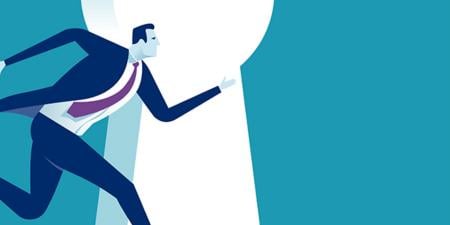Abstract
One way practitioners learn ethics is by reflecting on experience. They may reflect in the moment (reflection-in-action) or afterwards (reflection-on-action). We illustrate how a teaching clinician may transform relationships with patients and teach person-centered care through reflective learning. We discuss reflective learning pedagogies and present two case examples of our preferred method, guided group reflection using narratives. This method fosters moral development alongside professional identity formation in students and advanced learners. Our method for reflective learning addresses and enables processing of the most pressing ethical issues that learners encounter in practice.
Introduction
How does one become a more ethical practitioner? We suggest that clinicians learn ethics through reflective practice and reflective learning. Reflective learning incorporates the lessons of experience into practice and integrates these lessons into one’s body of knowledge, providing context and meaning [1-6]. Reflection promotes mindfulness and self-awareness, both of which form the basis of effective patient interactions, especially with patients whom one finds difficult or challenging. Whether “reflecting-in-action” while with a patient or “reflecting-on-action” after having seen a patient [7], the reflective practitioner compares intended with actual outcomes. In ethics as well as other aspects of medicine, the practitioner considers if outcomes are optimal and, if not, what might have been done better. In this way, moral development progresses alongside professional identity formation as a lifelong process [8-10]. We will begin this paper with a case illustrating how ethics can be learned and then taught through reflection-in-action and reflection-on-action. We will then describe the various methods for reflective learning, which have been used extensively by one of the authors (WTB) to promote learning of ethics and professional development [11-14], focusing on two synopses of vignettes that illustrate narrative reflection.
Case: Learning and Teaching Ethics through Reflection-in-Action and Reflection-on-Action
One of the authors (MG), having just begun as a faculty attending physician at a busy safety-net hospital, related this story: Ms. L had been a patient on many other services many other times, admitted frequently for lupus flares and always found to have a urine drug screen positive for cocaine. I saw the patient with my team of medical students and residents, sympathizing with her about her pain and talking with her about the dangers of crack cocaine. She nodded and acknowledged that, yes, she would try to quit. She was pleasant and thoughtful and seemed to mean what she said. But when I later reflected about the encounter, it felt lackluster. Our team had done what every team before had done, and the outcome of each of those well-meaning encounters had been the same.
I returned to the bedside alone and sat beside her. I reflected to myself, “Why were we not connecting better? What was I failing to learn about her life? What could I ask that others had not?” Perhaps the most important question I asked myself was, “Why can’t I understand her decision process?” And my answer was that I didn’t know her decision process.
I approached Ms. L with a more person-centered approach. “What is your life like outside of the hospital, Ms. L? What makes you like to use cocaine?” Her response changed the way I practiced medicine. She looked me in the eye and opened up about her life, describing an abusive boyfriend who had socially isolated her from friends and family. She could only leave the house for doctor appointments and hospitalizations, and the only people she saw were her boyfriend’s loud and crass friends who often filled the house. They brought cocaine with them, and she used it as a temporary escape. She knew all of the things that doctors had told her over the years, and she hated the drug. In her imprisonment, cocaine was the lesser of two evils.
Identifying a problem within the encounter and reflecting while I was with Ms. L—reflection-in-action—enabled me to see where we were off track and correct our course. I discussed with my team my conversation with Ms. L, and this subsequent reflection-on-action served as a teaching tool. We discussed good history-taking skills, compassion, bias and assumptions, and intimate partner violence, all of which are subjects taught in medical school and residency but not always within the context of building a caring relationship with the patient. By intertwining caring ethics into these lessons within a patient encounter, we make medical ethics more practical and approachable.
The case demonstrates ethics embedded in medical practice [11]. The physician’s compassionate efforts to elicit and understand the patient’s story and to empathize with—and thereby benefit—her patient illustrate caring ethics [10, 11, 15]. Reflection-in-action allowed the physician to go beyond her previous practice, which had not included asking the patient about her life and social situation, and to establish a more deeply ingrained habit in herself of considering the patient’s perspective [4-6, 16]. Later, mutual reflection-on-action ensured that her team appreciated the clinical and ethical importance of learning the patient’s perspective.
Applications of Reflective Learning in Medical Education
Reflective learning, wherein a person steps back and examines the approaches to a topic or experience, has been widely adopted by medical schools [2, 13], with reflective learning exercises being integrated into existing courses or special programs [13]. The Association of American Medical Colleges recommends reflective learning among its standard learning methods [17]. Pedagogical tools include narrative reflection using critical incidents, appreciative inquiry or other learner-generated narratives, case studies, journaling, reflective dialogical exercises with peers and mentors, role plays, and practical exercises [5]. Schemes are available to judge the depth of reflection, ranging from simply telling a story to providing opinions, justifications, supporting examples, analyses, strategies, and supporting evidence [18, 19].
Reflective learning involves several related concepts. Critical reflection (based on critical theory) examines the economic and power relationships that exist within social and institutional contexts [5]. Reflexivity refers to self-reflection, in which one examines one’s own assumptions and behaviors with respect to social roles and power relationships [5]. These methods can be applied to teaching ethics [18, 19].
One of the authors (WTB) has used guided group reflection on either critical incidents or appreciative inquiry narratives for medical students at Harvard Medical School, for residents in internal medicine at Emory University, and in multi-institutional faculty development programs, now applied at 28 medical schools [11-14]. Short narratives written by the learners are the subjects of discussion. The types of narratives used and the goals and methods of teaching reflective learning are described in more detail below.
Types of narratives. A critical incident (CI) in this setting is a narrative describing something that comes to mind as an important interaction, whether perceived positively or negatively by the learner [12, 13]. CI stories have the advantage of allowing students and other writers to process difficult experiences, such as challenging patient encounters, as well as to learn from positive experiences, such as having a good role model. Appreciative inquiry (AI) narratives are stories of success of a time when a learner was at his or her best [20]. The appreciative inquiry method as used in teaching medical humanism has been shown to build upon clinicians’ successes by increasing their awareness of, and motivating them to meet, their patients’ emotional needs [16]. Like free association, both methods uncover key experiences, including conflicts and difficulties that learners are currently struggling to surmount. AI narratives frequently address difficult situations that begin with a challenge that the learner successfully surmounts [16]. If not discussed and understood, unresolved or partially resolved incidents described in either type of narrative may fester, producing stress and inhibiting socialization [13-15].
Goals. The author’s goals for the reflective learning are threefold: first, to assist learners in becoming positively socialized into their roles and in forming professional identities; second, to enable them to process, gain perspective on, and come to terms with difficulties encountered on the road to becoming a professional; and, finally, to enable learners to become more self-aware and mindful practitioners who are capable of reflection-in-action and reflection-on-action and who are committed to their professional and ethical values.
Teaching methods. Narratives can be written prior to or in the initial 10-15 minutes of a session. Narratives should be read word for word by their writers, with ample time for listeners to process each narrative. It is important that all participants have the opportunity to read their narratives, although they are given the option to decline if they wish. Confidentiality is of course important. The group size is usually around eight. Meetings generally last 90-120 minutes with no interruptions.
The facilitator may guide the group by role-modeling behaviors that deepen the reflective learning, such as empathically posing a question to the story-writer that calls for meaningful reflection. The facilitator also may actively intervene and interpret group members’ behaviors in ways that encourage them to support and empathize with other group members. A safe environment where group members feel their contributions are met with understanding allows for deep reflection as participants comfortably disclose difficult situations that they have faced in their professional lives.
Virtually all stories, like the examples now to be given, incorporate an ethical issue. Hence, these methods enable participants to develop ethically as well as professionally by processing the issues that are personally important to them. Two examples will illustrate using critical incident and appreciative inquiry narratives for reflective learning.
Teaching a Critical Incident Narrative
An indigent woman refused to see a medical student in the walk-in clinic. The attending physician explained that it was a “teaching unit” and the patient “had no choice.” The patient stormed out. The student wondered “how this patient, who fit the bill of the type of person I had always seen myself helping, actually saw me as being aligned with Dr. N against her” [21].
As facilitators, we would focus on this student’s professional development and socialization into the profession while maintaining her core ethical values [8, 9]. She is idealistic and wishes to serve the indigent. If unaddressed, this incident might foster cynicism [22, 23]. We might start by asking her how she feels about the incident. Is she angry or disappointed? The facilitator might empathize by saying, “I would have felt uncomfortable,” and adding, “I might have felt helpless if I couldn’t speak up.” Very likely, other students would say they have felt the same in similar situations, so she would feel supported. We would praise her social conscience and her sense of justice.
The group could assist the learner’s professional socialization by encouraging her to understand this incident from the perspectives of the teacher and the patient. How did the teacher justify his behavior to himself? How could the learner have taken the patient’s likely perspective into account in the interaction [24]? Why is the clinic organized in this way? Can we change it for the better?
The facilitator could suggest methods to the learner for dealing more directly with the situation, such as asking a seemingly innocent question of the teacher, like “Why would it be wrong for you to see the patient?” However, we know from our experience that many students will be too insecure to confront their teacher. Reasonable goals are to assuage guilt in this medical student and to have her leave the session feeling comfortable with her role and choice of career direction and more confident of her understanding of others’ viewpoints as well as feeling supported by her peers and facilitator, encouraged in her desire to help the less fortunate, and perhaps empowered to ask more questions should she encounter this type of situation in the future.
Teaching an Appreciative Inquiry Narrative
A 22 year old female presented with complaints of fevers, night sweats and a left groin mass consistent with an acute infection. The patient spoke tearfully, “I don’t want to die.” The parents stood by, obviously emotionally affected. I (the doctor) [knowing that the prognosis was good] knelt down beside her, held her hand, and told her, “You are not going to die” [25].
The next morning I ran into her [the patient’s] mother. A medical student was with me. The mother stated, “I really liked how you talked to my daughter yesterday and thank you so much for taking the time to explain…” I said to the student, “This is why I love what I do. This is why I went into medicine” [26].
This faculty physician’s story illustrates the potential benefits and rewards of being compassionate. The story shows how much patients and families appreciate compassionate doctoring. The teacher also encouraged a medical student to empathize by pointing out how rewarding to physicians and beneficial to patients these types of experiences are. She then reinforced the lesson by briefly reflecting on its ample meaning.
As facilitators, we might ask the writer to reflect in more depth on the personal meaning of the story. We suspect that this physician reached a new level of ability in delivering compassionate care [16]. We would want to reinforce her new abilities as a healer and note that her action was considered by some to be courageous, in hopes of reinforcing her high level of performance and strengthening her moral commitment to humanistic values.
Conclusion
Our view of teaching ethics by reflective learning leans heavily on the process of professional identity formation. This view reflects our observations that progression of medical professionals’ identity formation to higher levels may be facilitated by fully processing impactful experiences through reflection under good supervision during their development [27]. Identity formation is entwined with moral virtues and values. Kegan describes the highest stage of identity formation as becoming a person who can choose good moral values for herself and, like the physician in our AI example, internalize and live by them [8]. One can certainly profit from other methods of teaching ethics by reflective learning. For example, educators can assign students to write narratives or recall stories specifically about ethical dilemmas or difficult patient encounters. We have presented our open-ended approach to learning ethics using narrative reflection. We believe this is an effective learner-centered approach that promotes formation of professional identity as a humanistic clinician. For the practitioner, reflection-in-action and reflection-on-action enhance patient care, especially in difficult or challenging patient interactions, and promote lifelong learning of knowledge and skills.
References
-
Schon DA. Educating the Reflective Practitioner: Toward a New Design for Teaching and Learning in the Professions. San Francisco, CA: Jossey-Bass; 1990.
-
Mann K, Gordon J, MacLeod A.
Reflection and reflective practice in health professions education: a systematic review.
Adv Health Sci Educ.
14(4):595-621.
Schon DA. Educating the Reflective Practitioner: Toward a New Design for Teaching and Learning in the Professions. San Francisco, CA: Jossey-Bass; 1990.
- Wald H, Davis SW, Reis SP, Monroe AD, Borkan JM. Reflecting on reflections: Enhancement of medical education curriculum with structured field notes and guided feedback. Acad Med. 2009;84(7):830-835.
- Atkins TW, Murphy K. Reflection: a review of the literature. J Adv Nursing. 1993;18(8):1188-1192.
-
Finlay L. Reflecting on reflective practice. The Open University Practice-Based Professional Learning Center. http://www.open.ac.uk/opencetl/sites/www.open.ac.uk.opencetl/files/files/ecms/web-content/Finlay-(2008)-Reflecting-on-reflective-practice-PBPL-paper-52.pdf. PBPL paper 52. Published January 2008. Accessed February 28, 2017.
-
Costa AL, and Kallick B. Learning through reflection. In: Costa AL, Kallick B eds. Learning and Leading with Habits of Mind: 16 Essential Characteristics for Success. Alexandria, VA: Association for Supervision and Curriculum Development; 2008:221-236.
-
Schon, 96, 118.
-
Kegan R. The Evolving Self: Problem and Process in Human Development. Cambridge, MA: Harvard University Press; 1982.
- Cruess RL, Cruess SR, Boudreau JD, Snell L, Steinert Y. Reframing medical education to support professional identity formation. Acad Med. 2014;89(11):1146-1451.
- Branch WT Jr. Supporting the moral development of medical students. J Gen Intern Med. 2000;15(7):503-508.
- Branch WT Jr. The ethics of patient care. JAMA. 2015;313(14):4121-4122.
- Branch WT Jr, Pels RJ, Lawrence RS, Arky RA. Becoming a doctor: critical-incident reports from third-year medical students. N Engl J Med. 1993;329(15):1130-1132.
- Branch WT Jr. Use of critical incident reports in medical education: a perspective. J Gen Intern Med. 2005;20(11):1063-1067.
- Branch WT Jr. The road to professionalism: reflective practice and reflective learning. Patient Educ Couns. 2010;80(3):327-332.
- Branch WT Jr. The ethics of caring and medical education. Acad Med. 2000;75(2):127-132.
- Branch WT Jr, Frankel R. Not all stories of professional identity formation are equal: an analysis of formation narratives of highly humanistic physicians. Patient Educ Couns. 2016;99(8):1394-1399.
-
MedBiquitous Curriculum Inventory Workshop Group Standardized Vocabulary Subcommittee. Curriculum standardized instructional and assessment methods and resource types (September 2012 version). Washington, DC: Association of American Medical Colleges; 2012. https://medbiq.org/curriculum/vocabularies.pdf. Accessed February 28, 2017.
-
Aronson L, Niehaus B, Kruidering-Hall M, O’Sullivan P. The UCSF LEaP: a guide for reflective learning in medical education. MedEdPORTAL Publications; 2012.
- Wald HS, Borkan JM, Taylor JS, Anthony D, Reis SP. Fostering and evaluating reflective capacity in medical education: developing the REFLECT rubric for assessing reflective writing. Acad Med. 2012;87(1):31-50.
-
Cooperrider D, Whitney D. Appreciative Inquiry: A Positive Revolution in Change. San Francisco, CA: Berrett-Koehler; 2005.
-
Branch, Pels, Lawrence, Arky, 1130.
- Coulehan J, Williams PC. Vanquishing virtue: the impact of medical education. Acad Med. 2001;76(6):598-605.
- Hojat M, Vegare MJ, Maxwell K, et al. The devil is in the third year: a longitudinal study of erosion of empathy in medical school. Acad Med. 2009;84(9):1182-1191.
- Loignon C, Fortin M, Bedos C, et al. Providing care to vulnerable populations: a qualitative study among GPs working in deprived areas in Montreal, Canada. Fam Pract. 2015;32(2):232-236.
-
Branch, Frankel, 1396.
-
Branch, Frankel, 1397.
- Branch WT Jr. Teaching professional and humanistic values: suggestion for a practical and theoretical model. Patient Educ Couns. 2014;98(2):162-167.



